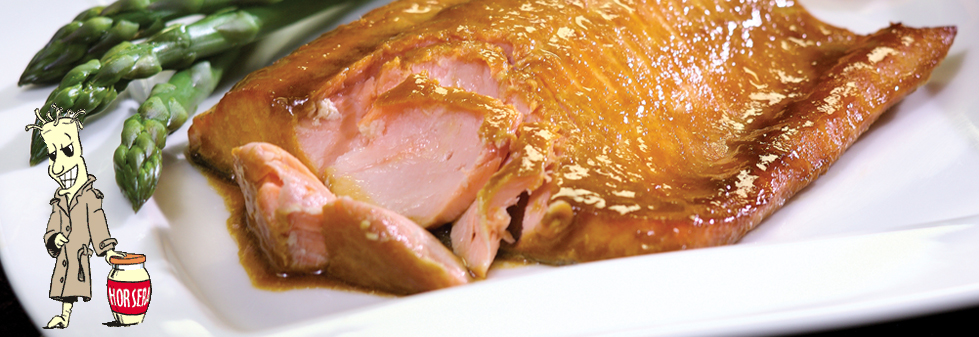
Horseradish History
What 3,000-year-old plant has been used as an aphrodisiac, a treatment for rheumatism, a bitter herb for Passover seders and a flavorful accompaniment for beef, chicken and seafood? If you guessed horseradish, you’re right. The history of horseradish is intricate and mysterious, but one certainty stands: Horseradish has been prized for its medicinal and gastronomic qualities for centuries.
The Egyptians knew about horseradish as far back as 1500 B.C. Early Greeks used it as a rub for lower back pain and an aphrodisiac. Jews still use it during Passover seders as one of the bitter herbs. Some used horseradish syrup as an expectorant cough medicine; others were convinced it cured everything from rheumatism to tuberculosis. Legend has it the Delphic oracle told Apollo, “The radish is worth its weight in lead, the beet its weight in silver, the horseradish its weight in gold.”
More recent appreciation of horseradish is believed to have originated in Central Europe, the area also linked to the most widely held theory of how horseradish was named. In German, it’s called “meerrettich” (sea radish) because it grows by the sea. Many believe the English mispronounced the German word “meer” and began calling it “mareradish.” Eventually it became known as horseradish. The word “horse” (as applied in “horseradish”) is believed to denote large size and coarseness. “Radish” comes from the Latin radix meaning root.
During the Renaissance, horseradish consumption spread from Central Europe northward to Scandinavia and westward to England. It wasn’t until 1640, however, that the British ate horseradish — and then it was consumed only by country folk and laborers. By the late 1600s, horseradish was the standard accompaniment for beef and oysters among all Englishmen. The English, in fact, grew the pungent root at inns and coach stations, to make cordials to revive exhausted travelers. Early settlers brought horseradish to North America and began cultivating it in the colonies. It was common in the northeast by 1806, and it grew wild near Boston by 1840.
Commercial cultivation in America began in the mid 1850s, when immigrants started horseradish farms in the Midwest. By the late 1890s, a thriving horseradish industry had developed in an area of fertile soil on the Illinois side of the Mississippi River.
Later, smaller centers of horseradish farming sprouted in Eau Claire, Wisconsin. After World War II, homesteaders in the Tulelake region of Northern California began cultivating the root in the west; other areas in the country followed suit.
Today, approximately 6 million gallons of prepared horseradish are produced annually in the U.S. — enough to generously season enough sandwiches to wrap 12 times around the world.
 Horseradish Information Council
Horseradish Information Council